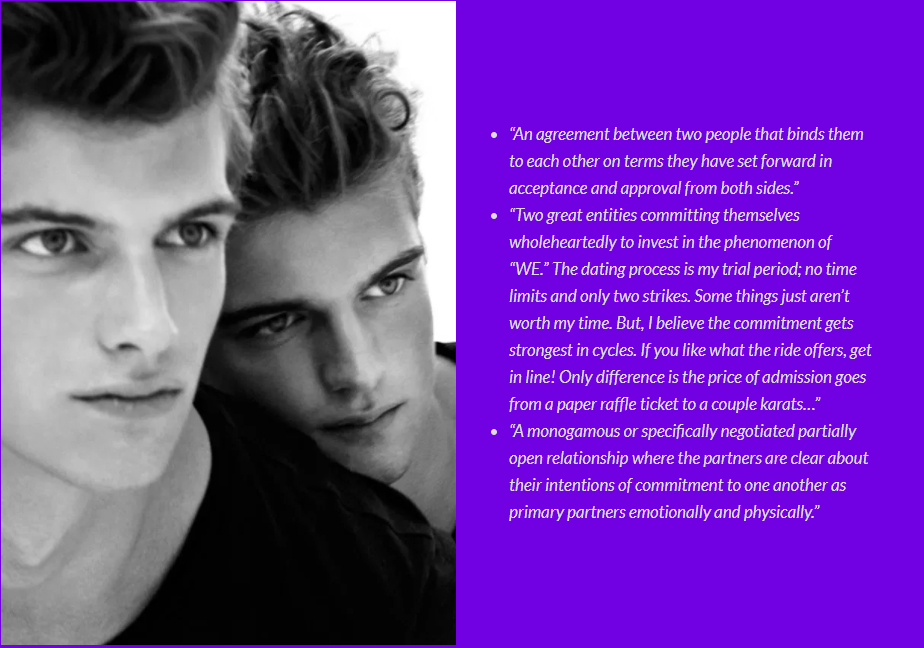How many types of relationships are there? The answer is related to how many people there are
Relationships of any type are unique and special to those involved in them. But how many types of relationships are there? The answer is related to how many people their are. As each person enters into a relationship their expectations are different and varied. This forms the unique mesh that is a relationship.
We can, however, put every relationship into 5 different relationship types. I’m sure there are more, but for the purpose of this essay, I will be covering the 5 types that I can see in this life. This is not the only way to look at and describe relationships, but it is a good beginning. I am not a relationship expert and what I am writing about is my own observations. If you feel that another definition fits your idea of each relationship type, then by all means, please use your own.

Why do we need to put ourselves into boxes anyway? Honestly, we don’t. So many people find it helpful in figuring out their existence that we define ourselves to great depths to help us feel normal and accepted… even if it’s just to please ourselves.
The relationship types that I’m going to talk about here are:
1. As equals 2. Male/Top-led vanilla 3. Female/Bottom-led vanilla 4. Dominant/submissive 5. Master/slave
Hopefully, you will see the differences I see in each of them as I describe them. If you have any other ideas of each type, please feel free to make a note of that in the questions below.
AS EQUALS
Most of the relationships that exist today are considered equal relationships. This means that each person has equal decision-making rights. Essentially this means that the couple takes turns being the lead. It can be during bill paying or sex, or any other house-making roles. One leads, and the other follows, but it’s seamless. Both parties feel that they are giving and receiving equally, which is how communication and honesty develop.
MALE/TOP-LED VANILLA
Unlike their Dominant counterparts, a male/top-led vanilla relationship does not have defined roles. Instead, it carries an unspoken protocol like a 50’s style housewife and husband. The woman/bottom is subservient (not necessarily submissive) to her husband in all things. However, it is a delicate balance between being in a male/top-led relationship and one seen as oppressive and abusive in today’s modern society.
FEMALE-LED VANILLA
In a female/bottom-led relationship, the female/bottom is considered the leader. In a ‘progressive feminist’ society, this is a welcome sight to the previously male-dominated world. Society sees a female-led relationship as empowering to both parties and a move forward. It’s established that the female/bottom makes the decisions in the relationship. It could even take on a reverse 50’s household-like feel.
DOMINANT/SUBMISSIVE
A Dominant/submissive relationship is one of the defined roles where one is always the Dominant and the other is always the submissive in the relationship. One difference between this type of relationship and the vanilla counterparts is that there usually is an erotic counterpart to the roles, which helps spice up the relationship. This type of relationship may or may not participate in BDSM or Domestic Discipline. The other noted difference is that there is never a relaxation of roles, where one party or the other may switch, which is more likely to happen in vanilla relationships.
MASTER/SLAVE
Considered a form of Total Power Exchange, a Master/slave relationship is one where a slave completely surrenders to the will of the Master. Different from the Dominant/submissive relationship by the stigma of consensual slavery and its stronger service base. A Master/slave relationship is not unlike a Dominant/submissive one on many levels. A slave may not have the right to voice opinions or provide input in decision-making. A slave may also be commanded to do things that submissives can negotiate. It’s all about the flexibility of roles. Master and slave roles are the most rigid, in my opinion.
BENEFITS OF DEFINED ROLES
The most significant benefit that relationships with defined roles have is that no one is left wondering who’s turn it is to lead. Granted, I rarely have heard of a fight directly related to functions. In a defined roles relationship, it’s much easier to know who decides what and how the outcome will play out. No one is left questioning if this bill got paid or when a new Skidoo ends up in the driveway.
Another benefit to defined roles is that it can help enhance a relationship because the parties would work in a smoother way. Each knows what is required of them and performs their duties for the betterment and enhancement of the relationship.

It is essential to say that roles are best determined naturally. It is tough to change one’s personality. The same applies to personal, sexually preferred positions. Partners should be able to decide on their compatibility level in a relatively short time. The majority experience is that physical attraction will probably lose against an incompatible personality or sexual preferences.
CONCLUSION
Whatever type of relationship you choose, you can be sure that there will be personal growth and development that can bring your relationship to the ultimate one for you. NO relationship is worth it’s salt without work from both parties, so get your gloves on and prepare to get dirty. Just make sure you know who makes those decisions.












